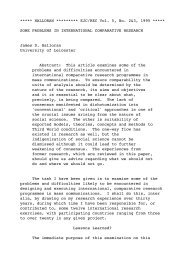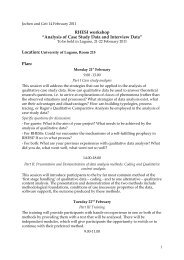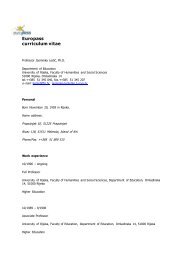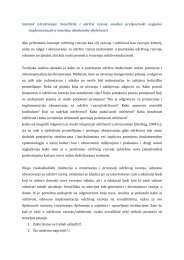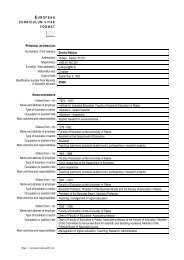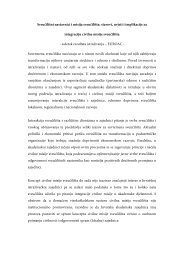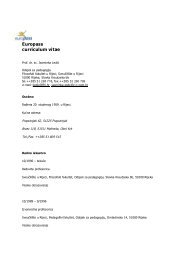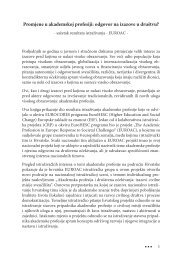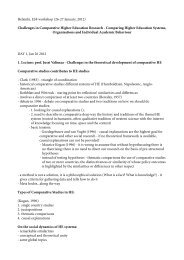OT_BCulum notes - euroac
OT_BCulum notes - euroac
OT_BCulum notes - euroac
Create successful ePaper yourself
Turn your PDF publications into a flip-book with our unique Google optimized e-Paper software.
Firms vary considerable in governance and organizational capabilities<br />
The governance of firms varies in three major ways:<br />
1. the degree of autonomy from investors, banks and other sources of finance<br />
2. degree of dependence on skills employees for problem solving and capability<br />
development<br />
3. degree of dependence on suppliers, customers and collective associations for<br />
innovation, knowledge and capabilities<br />
Three distinct types of organizational capabilities:<br />
1. coordinating<br />
2. organizational learning (developing routines)<br />
3. reconfiguring<br />
Friday, 25th Feb, 2011<br />
The New Institutionalism (Uwe Schimank / Frank Meier)<br />
Reading: meyer/rowan:<br />
- look at individual organization<br />
- empirical starting point - similarity of organizations<br />
- no existence of “one best way”<br />
- weber and taylor - efficiency and effectiveness are main goals in organizational<br />
development<br />
- actions are strongly shaped by institutions (neoinstitutionalism) - institutions are patterns<br />
which gives solutions: this is how it should be done; patterns are taken for granted, no<br />
alternatives, everything else would be called irrational, immoral, even crazy<br />
- organizations must ask themselves: what is rational?<br />
- institutions: legitimate patterns<br />
- rationality - not primarily orientations of organizations, but secondary<br />
- primary: equisition of legitimacy by the organization (it can be doe by conforming<br />
institutional patterns of rationality)<br />
- nobody knows what is really rational, but what is consider to be rational - “rational<br />
institutional myths”<br />
- institutional patterns vs. actual needs and practice - “de-coupling” as a solution<br />
- talk vs. action - organizational hypocrisy<br />
DiMaggio/Powell, 1983<br />
- what does this pattern means for the organizational field/for the organizational society -<br />
the concept of Isomorphism (this is their starting point and answer)<br />
- common search for legitimacy which organizations must have<br />
- competitive pressures<br />
- only limited number of organizational structures survive over time on highly competitive<br />
market (similar to ecology population)<br />
- isomorphism not because of the competitive external pressures but due to institutional<br />
pressures!!!




